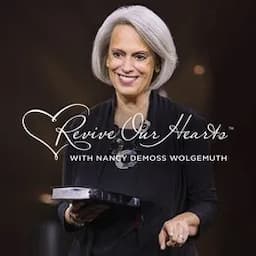The Christian Romance Genre: Faith and Fiction
By Elizabeth Prata
SYNOPSIS
I discuss the genre of Christian romance, with its emphasis on Christian values, faith, and wholesome themes. While this genre avoids explicit content, the field varies widely in interpretation and acceptance of certain topics. The piece also points to Harlequin’s influence in popularizing these narratives while advising readers to choose wisely.

Recently someone asked me if I could recommend a Christian romance novel. I was unaware that such a genre existed. Immediately my mind went back to before I was saved at age 43, when I had read a lot of secular romances. I connect secular romances in my mind with unbridled passion, which would be unsuitable for a Christian woman to read. But Christian romances are not that.
I am not familiar so I am relying on AI for this synopsis- Christian romance apparently is —
“a subgenre of Christian fiction where romantic relationships form the core of the story, but with a strong emphasis on Christian values, faith, and morality. These novels often explore themes of love, faith, and overcoming obstacles, while maintaining a clean and wholesome perspective. Christian romance novels generally avoid explicit sexual content, strong language, and graphic violence. The stories often focus on the development of romantic relationships between characters, with a strong emphasis on commitment, love, and marriage.“
Romances with a happy ending are encouraging and sweet. I mean, who doesn’t like The Princess Bride? By the way, that fine film (based on a book by the same title by William Goldman) is 38 years old. Yes.
Any content with a focus on relationships with Jesus at the core is bound to be refreshing after being surrounded in the secular world with everything ranging from poorly written drivel to bloody gore and horror. The hard part is finding GOOD ones, then narrowing to one’s own standards of Christian living.

However, just because a book is listed or sold under a banner of “Christian romance,” the field can vary widely with the content it contains. For example, the Christian Book Association has rules for what authors can include or not include in their books,
Core Requirements for Christian Romance Novels:
–Explicit Christian Message: The novel should convey a clear Christian message through the characters’ lives.
–Lack of Explicit Sex: Avoid explicit sexual content or bedroom scenes.
–Conservative Evangelical Christian Worldview: Manuscripts should adhere to a conservative evangelical perspective.
–Faith in God: The fundamental theme should be the belief that faith in God is the foundation of any romantic relationship.
Some content may contain characters where the heroine is a female pastor or assistant pastor, while other Christian publishing agencies do not accept such manuscripts. Another topic is divorce- some organizations refuse to accept manuscripts with main characters who have been divorced, while others consider it acceptable.
Alcohol consumption, descriptions of romantic activity, and character appearance AKA modesty are elastic depending on which publisher has issued the book.
Harlequin is probably the best known publisher in this genre. Their Love Inspired and Love Inspired Suspense books focus on modern Christian romance with wholesome values, featuring characters facing life’s various challenges with faith.
When the “Left Behind” series was published throughout the 1990s, Harlequin noticed the huge popularity of the series and of Christian fiction in general, a previously underserved demographic. Harlequin subsequently established their Love Inspired imprint, focusing on Christian romance. Though Harlequin was never known for explicit or smutty romance, the Love Inspired imprint was created to specifically align with Christian relationship values.

As with everything we absorb, there are always subtleties that shape our worldview, whether it’s secular or Christian. This study comparing romance novels from secular and Christian realms noted that while Christian romance is often labeled as such, the mention of Jesus in a wide array of these books is negligible to non-existent. God is mentioned, faith, or believing, but Jesus as the named Deity is not as often a subject. This might be the reason some publishing houses name this genre “Inspirational Romance” instead.
Though there seems to be a market for this genre, sadly, commenters state that these books just don’t pop up often in the places people most often search for recommendations, such as Reddit, Twitter, Goodreads, or Amazon. It’s hard for some people depending on their location to find them in libraries, too, because the paperbacks wear out quickly and it’s not always easy to get hardcover versions. So if you are looking for a Christian romance, particularly Love Inspired Harlequin, either be patient thought interlibrary loan or scour the used book sales. Or buy new from a bookseller.
Even though we do our diligence, sometimes we read something that offends our sensibilities. I mentioned in another essay this week that I’d picked up a Nicholas Evans novel. He was supposed to be wholesome or clean. Yet there were repeated instances of using God’s name in vain, and when I came across an f-bomb, I threw the book out. Francine Rivers is noted for “pushing boundaries” which is code for, (IMO) unacceptably unwholesome.
I hate when I accidentally come across something that is beyond my personal boundaries that gets into my head. While we can’t live in a hermetically sealed bubble that protects us from the world, it is true that assessing what we intend to absorb or assess before our children absorb prior to absorbing it becomes more and more time consuming.
Sometimes we have to go far backward to find something clean, as each generation becomes more used to profane situations. The Duke Christian Romance study notes this: “Before Christian romance existed, there was ‘sentimental’ fiction in the nineteenth century. Sentimental fiction was said to be fiction “for and about women that celebrated conservative Protestant piety as well as love and home” (Neal, 3). Two prominent authors of sentimental fiction were Harriet Beecher Stowe, author of Uncle Tom’s Cabin, and Susan Warner, who wrote The Wide, Wide World.” (Note: The Wide, Wide World book is available for free to download or read online through Project Gutenberg).

My best advice is two-fold. First, it is important to be discerning and careful when choosing to fold in another genre to your entertainment, whether e-books, hard copy books, podcasts, movies and so on. Read reviews widely. Talk to other women in your church who have similar tastes and Christian boundaries as you do and ask them what they are reading lately. Then, when you find an author or series that you are comfortable with, stick to that author. Sometimes Amazon is helpful here with the “Customers also bought” or “Similar Books” section of a page.
This essay on Christian sentimentalism novels of the 1800s concludes with a synopsis of some of the more popular of those type of books. My advice here is that if you do go backward to find some oldies, and encounter language, vocabulary, and sentence construction foreign to what you’re used to, stick with it. You get accustomed pretty quickly if you march over the hump of unfamiliarity. It’s worth it.
I am not familiar with any of these books synopsized from the sentimentalism literature genre essay at Oxford bibliographies, they were just popular examples of the previous generation of Inspirational literature from before our generation, so do your diligence.
Cummins, Maria. The Lamplighter, or, An Orphan Girl’s Struggles and Triumphs. London: William Nicholson and Sons, 1854.
A key text in the literature on poverty and childhood, the novel opens with an impoverished young girl watching a lamplighter progress along a city street and follows her upbringing as she achieves both economic survival and Christian redemption.
Harper, Frances E. W. Iola Leroy, or Shadows Uplifted. 2d ed. Philadelphia: Garrigues Brothers, 1893.
Written by an activist poet and novelist, Iola Leroy follows the shameful history of slavery through to the post–Civil War struggles for dignity and redemption.
Phelps, Elizabeth Stuart. The Gates Ajar. Boston: Osgood and Fields, 1869.
In this immensely popular post–Civil War novel, the difficulty of Christian resignation in the face of loss is combined with the ability of women characters to find solace and inspiration in each other.
Southworth, Emma. The Hidden Hand. Chicago: M. A. Donohue, 1859.
Capitola, the heroine of Southworth’s The Hidden Hand, is a self-supporting and independent heroine who dresses as a boy and fights in duels; even though her story ends in marriage, this sensational novel might be read as the counterexample to sentimental and domestic fiction. Southworth’s heroine Capitola is unlike traditional sentimental heroines; she, like the story-paper, is a hybridizing force of gender norms and national cohesion.
Stowe, Harriet Beecher. Uncle Tom’s Cabin. The Library of America. New York: Literary Classics of the United States, 1982.
Originates or builds upon many of the conventions of sentimentalism, including direct address of the reader, asking the reader to forge emotional bonds with those in need (the enslaved), and the death of a beautiful girl. Stowe’s novel gave birth to the Uncle Tom stereotype, the selfless black servant who is loyal to his white owner’s whims. Much criticism was leveled at the novel in the twentieth century, particularly Stowe’s perpetuation of black stereotypes and her endorsement of colonization at the book’s end. Originally published in 1852.
Warner, Susan B. The Wide, Wide World. London: William Nicholson and Sons, 1850.
Following the “recovery” of this novel through the writing of Jane Tompkins, this novel became available for classroom use. Its main character, Ellen Montgomery, is sent to live with the unfortunately named Aunt Fortune because of the illness and subsequent death of her mother. Her trials and tribulations as a city girl who must learn to live in the rough world of the country as well as to locate Christian forbearance made this novel a runaway best seller.
Happy reading!








